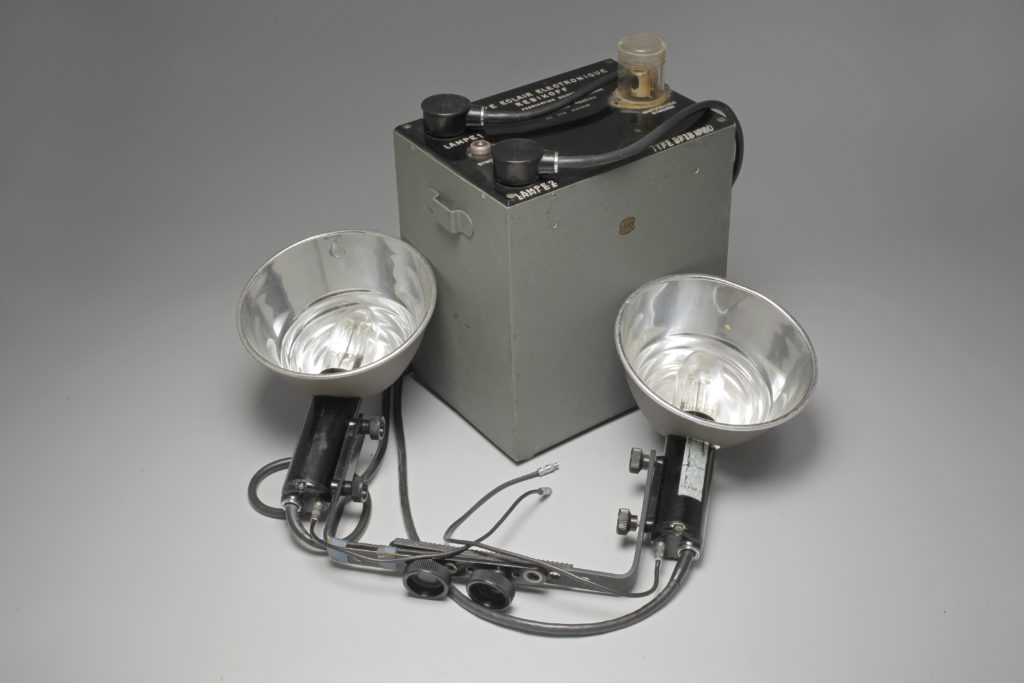Artificial light
The first instances of the use of electric lighting in photography date back to the end of the 19th Century. The incandescent lamp would become a common sight in photographers’ workshops, only to be replaced by the studio electronic flash from the 1960s.
In 1925, brothers Laurent and Augustin Seguin first presented the true invention of the electronic flash: the Stroborama, which apparently immobilizes a moving body through a series of brief flashes of light repeated at a given frequency. The flash is caused by the instantaneous discharge of an electrical spark within a tube filled by a rare gas, krypton. An important breakthrough was made, when a capacitor was developed that could store the electrical energy needed for the discharge.
In 1936, Frenchman Paul Laporte had the idea of using xenon, which has a hue close to that of daylight when it is made a conductor of electrical current. American physicist Harold Edgerton designed the first studio electronic flash in 1939. Russian engineer Dimitri Rebikoff began working on the subject in 1943 in Paris, and in Switzerland after that, where he was represented by Pierre Bron, who decided to undertake the manufacturing and produced the first Broncolor flash in 1953.
The first portable flashes were rather unwieldy: the generator, housed in a case or satchel, included rechargeable accumulators. Technical progress gradually enabled this equipment to be made more compact.


